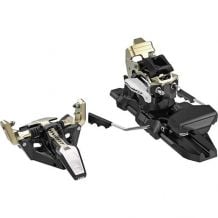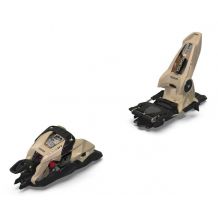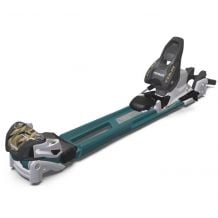Sign in
Contact
Ski touring bindings
-

 Dynafit Seven Summits+ Binding (black/silver)251.99 €-31%
Dynafit Seven Summits+ Binding (black/silver)251.99 €-31% -

 Mounting Dynafit Ridge (Black/Gold)356.90 €-35%
Mounting Dynafit Ridge (Black/Gold)356.90 €-35% -

 Touring ski bindings Skitrab TITAN VARIO.2 ROSSO + ST78323.99 €-35%
Touring ski bindings Skitrab TITAN VARIO.2 ROSSO + ST78323.99 €-35% -

 Ski touring bindings G3 ZED 9 (Green) 2024325.99 €-32%
Ski touring bindings G3 ZED 9 (Green) 2024325.99 €-32% -

 Ski touring bindings PLUM KARIBOU 12 100-130mm (Orange)464.25 €-25%
Ski touring bindings PLUM KARIBOU 12 100-130mm (Orange)464.25 €-25% -

 Ski touring bindings PLUM KARIBOU 12 85-100mm (Orange)464.25 €-25%
Ski touring bindings PLUM KARIBOU 12 85-100mm (Orange)464.25 €-25% -

 Ski touring bindings PLUM KARIBOU 7 100- 130 mm (Turquoise)419.99 €-32%
Ski touring bindings PLUM KARIBOU 7 100- 130 mm (Turquoise)419.99 €-32% -

 Ski touring bindings PLUM KARIBOU 7 85 - 100 mm (Turquoise)419.99 €-32%
Ski touring bindings PLUM KARIBOU 7 85 - 100 mm (Turquoise)419.99 €-32% -

 Adjustment plate ATK 30 MM HEEL PLATE (black)36.75 €-25%
Adjustment plate ATK 30 MM HEEL PLATE (black)36.75 €-25% -

 Ski touring bindings Skitrab BINDING TR1471.20 €-20%
Ski touring bindings Skitrab BINDING TR1471.20 €-20% -

 FIXATIONS Skitrab GARA TITAN + ST 22/23 (Blue)391.20 €-20%
FIXATIONS Skitrab GARA TITAN + ST 22/23 (Blue)391.20 €-20% -

 Touring ski bindings Skitrab BINDING TITAN VARIO.2 BLUE + ST 7-9323.99 €-35%
Touring ski bindings Skitrab BINDING TITAN VARIO.2 BLUE + ST 7-9323.99 €-35% -

 Touring ski bindings Skitrab BINDING TITAN VARIO.2 BLUE + ST 9-11349.99 €-29%
Touring ski bindings Skitrab BINDING TITAN VARIO.2 BLUE + ST 9-11349.99 €-29% -

 MARKER CRUISE 12 105MM BLACK/GREEN ()359.93 €-25%
MARKER CRUISE 12 105MM BLACK/GREEN ()359.93 €-25% -

 Binding Marker Cruise 12 90mm (black/green)311.99 €-34%
Binding Marker Cruise 12 90mm (black/green)311.99 €-34% -

 Mounting Marker F10 TOUR S 265-325 100mm209.99 €-39%
Mounting Marker F10 TOUR S 265-325 100mm209.99 €-39% -

 Mounting Marker F10 TOUR L 305-365 100mm262.42 €-25%
Mounting Marker F10 TOUR L 305-365 100mm262.42 €-25% -

 Binding Marker Duke PT 16 100mm (tan/black)449.93 €-25%
Binding Marker Duke PT 16 100mm (tan/black)449.93 €-25% -

 Binding Marker Duke PT 16 125mm (tan/black)449.93 €-25%
Binding Marker Duke PT 16 125mm (tan/black)449.93 €-25% -

 Binding Marker DUKE PT 13 125mm (black/red)412.43 €-25%
Binding Marker DUKE PT 13 125mm (black/red)412.43 €-25% -

 Binding Marker Duke PT 11 100mm (anthracite)374.92 €-25%
Binding Marker Duke PT 11 100mm (anthracite)374.92 €-25% -

 Binding Marker Duke PT 11 125mm (anthracite)374.92 €-25%
Binding Marker Duke PT 11 125mm (anthracite)374.92 €-25% -

 Marker F5 JR TOUR 90 (anthracite/white) children's binding149.92 €-25%
Marker F5 JR TOUR 90 (anthracite/white) children's binding149.92 €-25% -

 Touring ski bindings G3 ION 12 with Brakes 100 mm (orange)378.00 €-30%
Touring ski bindings G3 ION 12 with Brakes 100 mm (orange)378.00 €-30%
The ski touring binding system is an important part of the equipment, which must free the heel on ascents and block it on descents. As in alpine skiing, the ski touring binding is a safety element designed to protect the skier from trauma, especially joint trauma. But the touring ski binding presents other challenges and, in particular, to facilitate the ascent while making the descent safer.
Three types of bindings
- The disengageable fasteners
Very similar to alpine bindings, with the difference that you can go up with them and thus climb without taking off your shoes. Usable with classic ski boots, they are the heaviest touring bindings. They can be used with classic ski boots, and are the heaviest touring bindings, so they should be reserved for very short and occasional outings. Freeriders, for example, will appreciate reaching hard-to-reach areas with them, even if the weight of their fats added to the weight of the bindings won't make them climb very high. However, these plate touring bindings have a safety advantage, as they allow a similar release as alpine bindings.
Discover our top models such as the Marker tour binding, or the junior model the touring startup which are intuitive models for beginners or free riders.
- The low tech fix.
Bindings specific to ski touring, Low Tech (or LT) bindings are only compatible with ski boots specially designed for touring and equipped with inserts: a hole is drilled on either side of the front of the shell, into which the metal tips of the stop fit. The stop, reduced to its minimum, generally has only two positions: the "on" position, which totally blocks the binding and thus prevents the ski from being lost on the way up, and the "ski" position, which allows the ski to be removed on the way down thanks to the adjustment applied at the heel.
The major advantage of these bindings is in the weight: 700gr on average the pair could hardly be lighter. But the lightness has a price, especially safety: no stop-ski, and a strap system linking the ski to the ankle.
- Bindings with inserts last generation
Halfway between the Low Tech and the plate binding, the new touring bindings with inserts attempt to combine the lightness of the classic touring binding with the safety of the disengageable alpine binding. And the result is rather conclusive with insert bindings weighing around 1.5kg per pair (compared to 3kg for the disengageable bindings) while ensuring a boot release close to that of alpine ski bindings, thanks to a modification of the heel strap which now includes ski stops and a lever system engaged by the heel. If Marker has placed itself as a pioneer in the sector in the winter of 2015, by unveiling its Marker Kingpin attachment around which the brand had created so much mystery, these latest generation insert bindings are tending to spread much more widely from the 2015/2016 season onwards and other brands are already working on marketing their own models.
Each practice (approach, touring or freerando) corresponds to a binding adapted to the specific needs of the skier.
With the boom in ski touring in recent seasons, the brands are particularly focused on developing their technologies to offer skiers bindings that are ever more efficient, safer and more reliable. light as Dynafit bindings.
































